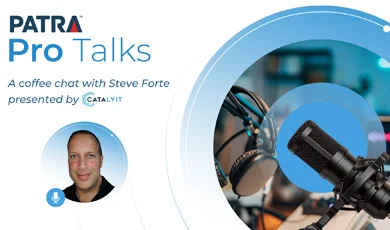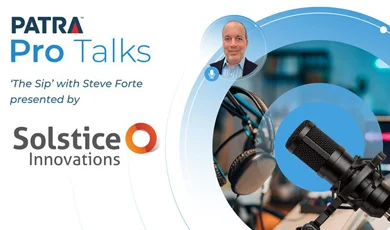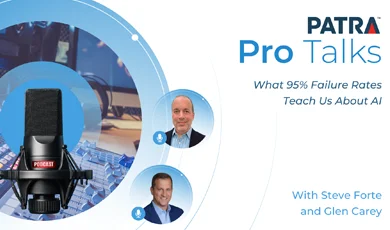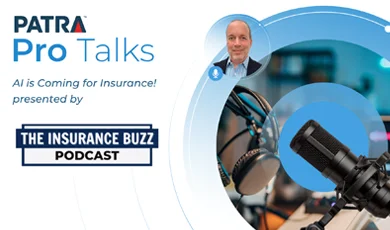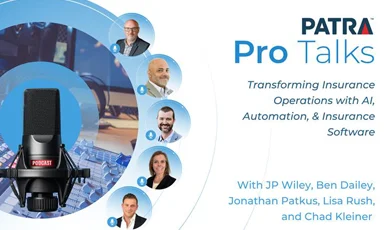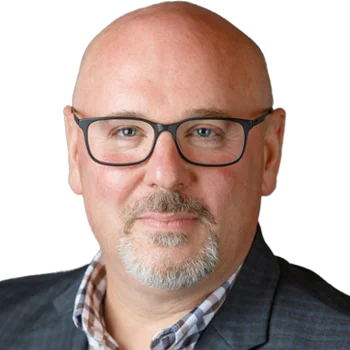Hello, everyone. I’m JP Wiley, the vice president of service architecture. Along with me are my esteemed colleagues and industry experts, Lisa Rush, who is our VP of business development, Ben Dailey, our vice president of enterprise sales, Chad Kleiner, our strategic account executive, and last but not least, Jonathan Patkus, our enterprise sales manager. We’ve gathered this panel to discuss the current state of the insurance ecosystem and cross our conversations that we’re having with our clients, our customers, and anyone else that we’re speaking with at industry trade shows, our peers internally, about what we’re seeing in the market. It seems that the forces of change can be seen and felt in every nook and cranny of our environment.
And with that being said, I think that there’s a lot of noise that’s happening out there. And there’s also, of course, that pressure that we’re experiencing on operating margins.
So I’d like to see what this team has in mind about what are we seeing in the marketplace and how are you seeing some of these markets respond in regards to the pressure on operating margins and all of the noise that that we have out there.
It’s an interesting and timely question coming off some rather large industry conferences as of late. In my experience, I think we’re seeing some varying reactions when we talk to execs, specifically those responsible for making some big bets in times of uncertainty like these. It seems customer demand is weighing heaviest. There’s laser focus on retention while making moves to incentivize growth.
But at the same time, when operational expenses are increasing, what we’re hearing, at least from those that are willing to take action, is a reevaluation of the overall operating model at the enterprise level has been the theme.
It seems obvious, but if your current operating model was designed during different market conditions or a different market environment, maybe it’s time to dust that off.
The governance around that seems to follow a bit of a pattern, at least this is what we’re hearing as of late, creating a very succinct North Star that can be measured against with your typical industry metrics is, again, a bit of an obvious statement, but seemingly a strong starting point so these execs can measure and manage the success of their bets.
And then taking a big step back, assessing the operations against that NorthStar, these current conditions with rising claims costs, the expense of materials in general, identifying and categorizing some short, mid, and long term plays and putting some estimated impact against those, and then really just having the courage to make bets on needle movers that balance cost takeout, cost avoidance with your growth plans.
That at least seems to be the foundational macro approach that we’re seeing execs at least either talking about or taking action on. I suspect my colleagues here are anxious to weigh in on some of the tactics that ultimately would influence that a change in that operating model. So I’ll throw that one out there to the group.
I’ll speak up for specialty since that’s the land I live in. So wholesale MGA carrier.
We’re really seeing a shift and the E and S market is exploding. Right? So many more, opportunities, that haven’t been seen before. So what I hear our customers and prospects saying is they’re trying to manage their operations, make it quicker, better, faster, but we also wanna maintain or reduce costs, which is always a component. Lot of talk about AI and how that plays into elevating the operation scheme, making us both from a operational standpoint and a cost standpoint better able to manage. And we are seeing a lot of noise around AI.
I think people are inundated with what they’re hearing and still trying to figure it out. But for what I see in our business is we’re able to take those AI tools and make us more efficient and our customers more efficient so it directly hits the bottom line.
Yeah. That that’s just to piggyback off what you said from what I’m seeing, and, essentially, it’s across the entire market, right, is how do we create this effective operational model that blends AI together with a human in the loop component. Right? Because AI is not advanced to a point where it’s perfect every single time.
You also have to utilize that AI to do things at scale, large volumes of repetitive tasks. But strategically implementing labor arbitrage in addition to the AI is a direction that we see a lot of the market going. And when the AI hits essentially a low confidence decision or it encounters edge cases, a human component comes into the loop, and they’re the reviewers. Reviewers are often located in lower cost areas around the globe, and so you’re leveraging that labor arbitrage to maintain quality oversight without inflating the overhead costs that’s improving those margins.
So the real kicker is every human correction feeds back into the AI, making it smarter over time. So we see that as the direction the industry is going, but at the same time, you’re still improving your accuracy, accelerating workflows, and operational margins. And so it’s a great way to compile both. And so that’s a big chatter in the market is how can we utilize lower cost labor arbitrage and the robust tasks and processing power of AI.
Chad, you bring up a great point with the human in the loop, which I failed to mention. I don’t see that ever going away. I don’t think many of the industry conferences, the experts that we’re hearing from, the human will always be in the process because we need to maintain that quality and that emotional balance when we’re servicing our customers.
Lisa, great perspective there with specialty. What I’m seeing on the retail space and hearing a lot of conversations, folks are looking at standardization right now. We’ve had a period of time, probably the past four to five years of tremendous m and a growth. It slowed for the first time since 2020 and last year, but just marginally.
And we saw some pretty big m and a transactions go down so far in the past eight months or so. And now what you’re left with is a bunch of different systems. We have to integrate systems. We have a bunch of different folks.
We have to get them on the same processes.
We have to look at our processes and workflows internally, especially on our back office models. And what does that look like, longer the days gone by where folks can operate in a bubble and do their own thing? If we’re gonna look at margins, even one, two, three percent increase in margins, where are we gonna find that? We’re gonna find that by standardizing processes and leaning on folks, partnering with folks that can help us do that, whether through labor arbitrage or true partnerships.
Again, you guys were talking about AI, automations, bots. Various things out there in the marketplace is what I’m really seeing and hearing conversations today.
I like that that kind of point of standardization, JP, because I think if you go back to the overarching governance model around the new operating model, the order of things that we’ve been talking about, I think once you standardize or at least identify where the standardization opportunities exist, that’ll then make the opportunities for labor arbitrage, for tech involvement, for all these other, as I called them earlier, bets a little more obvious. And your focus needs to be both on, I would say, cost avoidance, but also or cost takeout, but also making sure that your customers are still getting what they need and making sure that you’re taking speed into account. All these things we’re talking about should ultimately free up time for our customers to be better taken care of, and that impacts the bottom line. It impacts retention.
And, all the while, you can be more cost efficient.
Beautiful. And, Ben, I know you have you’re very fluent in understanding that and how that’s happening across the landscape of the market out there right now. And, Jonathan, you as well as you’ve seen the m and a happening.
With that expertise, can you elaborate a little bit on some of the techniques and measures that have been used to ensure the success of those consolidations or those standardization efforts that you’ve seen other organizations take on?
I can speak to maybe at the highest level, I think, again, if you start with that kind of expense ratio metric as your North Star, that’s how you measure the financial impact. But what I would say is when you start to deploy things like a different type of tech with human in the loop and standardization of processes, measuring some sort of adoption metric is key. Right? It’s one thing to say I’m going to do this, and we’re gonna do this across the enterprise. It’s another thing to measure and manage. You’re gonna have resistance. Change management is a massive component to winning the I don’t wanna say a battle, but the internal winning of hearts and minds on a new way of doing things.
So I would say two things, the traditional metric of expense ratio and just making sure that you’ve got champions and sponsorship that are constantly looking at and evolving the adoption strategy.
I think that’s huge, Ben, because the change management is everything. We can speak to high level executives who aren’t in the day to day, but if the day to day workers aren’t pulling their share of business and getting the job done, it’s a challenge for everybody and so much harder to standardize and adopt that.
Do we see that there has been a a shift in the organizations where they’re going out into the marketplace and looking for expertise to come in and help standardize and help drive some of that change management so that they can achieve those operating models and they can achieve the standardization.
It takes a lot of expertise. Are we seeing that there’s a lot of that that exists across the board in the insurance system that we have out there?
I think what I’ve seen so far and each entity is a little bit different, you know, how they’re structured today. But I’ve seen with some of these m and a’s that have taken place here recently over the past twelve months, especially the larger ones, there’s a pairing going on of organizations. Maybe one organization’s decentralized, another organization is top down, and they’re blending those two entities.
And they’re actually getting that expertise inside of the purchase that they’re then able to deploy across the entire company to start looking at, obviously, increasing margins overall.
It seems like there might even be influence on m and a activity based on how different the acquired party looks
And what the ultimate desires of the acquirer are. And by the way, to also answer your question maybe in a different way, JP, you don’t have to necessarily go out and expect to spend six and seven figures on a big name consultant to do this kind of evaluation. You’ve got both expertise in how highly likely you’ve got expertise with existing partners that have been down this road before or who can walk you through a playbook that maybe they’ve seen be effective across their customer base and who are aggressively looking to partner with point solutions and technology that maybe you don’t necessarily as a an insurance exec have the time to pilot or test or learn. Look within your own walls, look within your own current partnerships, and don’t feel daunted by a giant expense in a long drawn out consulting process to get to the bottom of what we’re talking about here.
Very good. I would totally agree that insurance expertise tied in there with all of that change management, with that technology is critical to making sure that we’re tying all the pieces together and really get delivering on our promises to our customers.
Alright. With that being said, it’s clear from what we heard today that the organizations need to focus on refinement of their operating models. That’s top down, looking across the board, the end to end perspective of how they’re currently operating. Along with that, they need to look at their internal agility to be able to expedite these changes as they’re coming in. It seems that we have been known as an industry of being so large that we oftentimes tumble upon ourselves and really figuring out how to get through those hurdles and how we can help deliver on these promises and execute to get to those operating models that we’re looking for.
And the very last but not least, and I think all of you spoke to it at some point today, was really embracing the technologies that we have out there, coupling those with our people to drive more efficient, better decisioning so that our people can have their eyes, their ears to the ground in really addressing the risk and understanding how they can support our clients.
So thank you again for your time, and we look forward to seeing you next time around.
